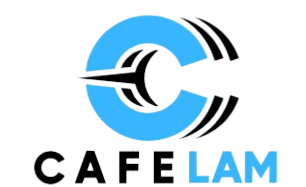The senior year countdown brings excitement and anxiety as families face a pivotal decision: should your teen head straight to college or take a gap year? This choice shapes the next chapter of their life, making it crucial to weigh all factors carefully before committing to either path.
Understanding the Gap Year Option
A gap year involves taking time off between high school graduation and college enrollment. Students use this period for various purposes, including work experience, travel, volunteer service, internships, or personal development. This structured break from formal education has gained popularity as more families recognize its potential benefits.
Research shows that gap year’s students often perform better academically when they eventually enter college. The American Gap Association reports that students who take gap years demonstrate increased motivation, clearer career goals, and stronger leadership skills compared to their peers who transition directly from high school.
Types of Gap Year Programs
Gap years take many forms, from structured programs to self-directed experiences. Some students participate in service programs, working with nonprofits or community organizations. Others pursue internships in fields of interest, gaining real-world experience that informs their college major selection.
Travel programs offer cultural immersion and language learning opportunities. Some students choose to work full-time, building financial resources for college while developing professional skills. Academic gap years might include attending a college preparatory high school in Salt Lake City for additional coursework or pursuing independent study projects.
Benefits of Taking a Gap Year
Personal Growth and Maturity
Gap years provide invaluable opportunities for personal development. Students gain independence, learn to manage responsibilities, and develop problem-solving skills outside the academic environment. This increased maturity often translates to better college performance and clearer life direction.
Many students use gap years to explore interests and potential career paths. This exploration helps them choose college majors and career directions with greater confidence, reducing the likelihood of multiple major changes during college.
Financial Advantages
Working during a gap year’s allows students to save money for college expenses, potentially reducing student loan debt. Even part-time work combined with living at home can create substantial college savings. Additionally, some employers offer educational benefits or scholarships for gap year workers who plan to attend college.
Skill Development
Gap years offer unique skill-building opportunities not available in traditional classroom settings. Students develop workplace skills, cultural competence, language abilities, and practical life skills. These experiences often make college applications more competitive and provide valuable talking points for admissions interviews.
Potential Drawbacks to Consider
Academic Momentum Loss
Taking time away from structured learning can affect academic readiness. Students might struggle to regain study habits and classroom focus after a year away from formal education. This concern particularly applies to students in rigorous academic programs who rely heavily on momentum to maintain their performance levels.
Social Disconnection
While friends head to college, gap year’s students might feel left behind socially. The traditional high school friend group often disperses during college, and gap year students can experience isolation or feel out of sync with their peer group’s timeline.
Planning and Structure Challenges
Successful gap years require careful planning and clear goals. Without proper structure, gap years can become unproductive periods that don’t advance personal or professional development. Students need strong organizational skills and family support to maximize gap year benefits.
Making the Right Decision
Assess Your Teen’s Readiness
Evaluate your teen’s academic preparedness, emotional maturity, and motivation level. Students who feel burned out from high school, lack clear college goals, or need additional academic preparation might benefit from a gap year. Conversely, highly motivated students with clear academic paths might thrive by continuing directly to college.
Consider Financial Factors
Analyze the financial implications of both choices. Calculate gap year costs versus immediate college expenses. Consider earning potential during a gap year and how delayed college enrollment affects financial aid eligibility and family financial planning.
Evaluate Goals and Objectives
Discuss your teen’s short-term and long-term goals. Gap years work best when aligned with specific objectives, whether gaining work experience, improving academic preparation, or pursuing personal interests. Students without clear gap year goals might benefit more from immediate college enrollment.
Research Options Thoroughly
Investigate specific gap year’s programs or college alternatives your teen is considering. Look for structured programs with clear outcomes and strong support systems. Similarly, research college programs to ensure they align with your teen’s interests and career goals.
Creating a Decision Timeline
Start conversations early in junior year to allow adequate planning time. Research gap year programs and college applications simultaneously, keeping multiple options open. Set decision deadlines that align with college application timelines and gap year’s program requirements.
The gap year versus college decision requires careful consideration of your teen’s individual needs, goals, and circumstances. Either choice can lead to success when made thoughtfully and supported properly. Focus on what best serves your teen’s personal development and long-term objectives rather than external pressures or expectations.







